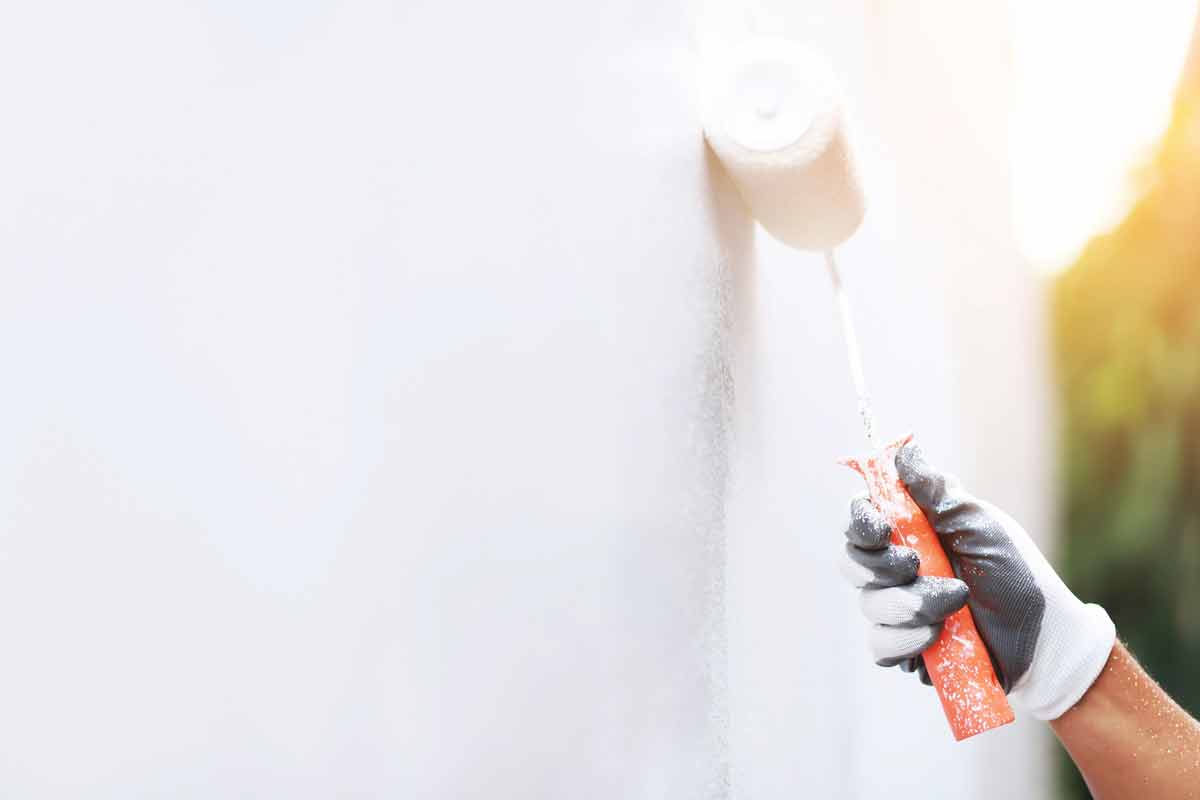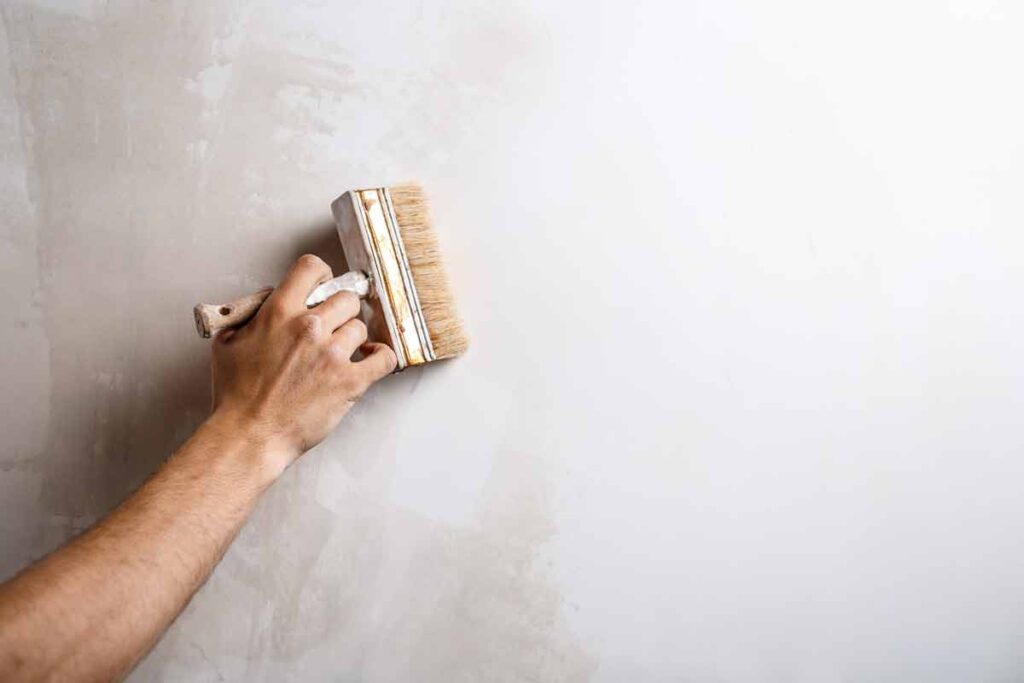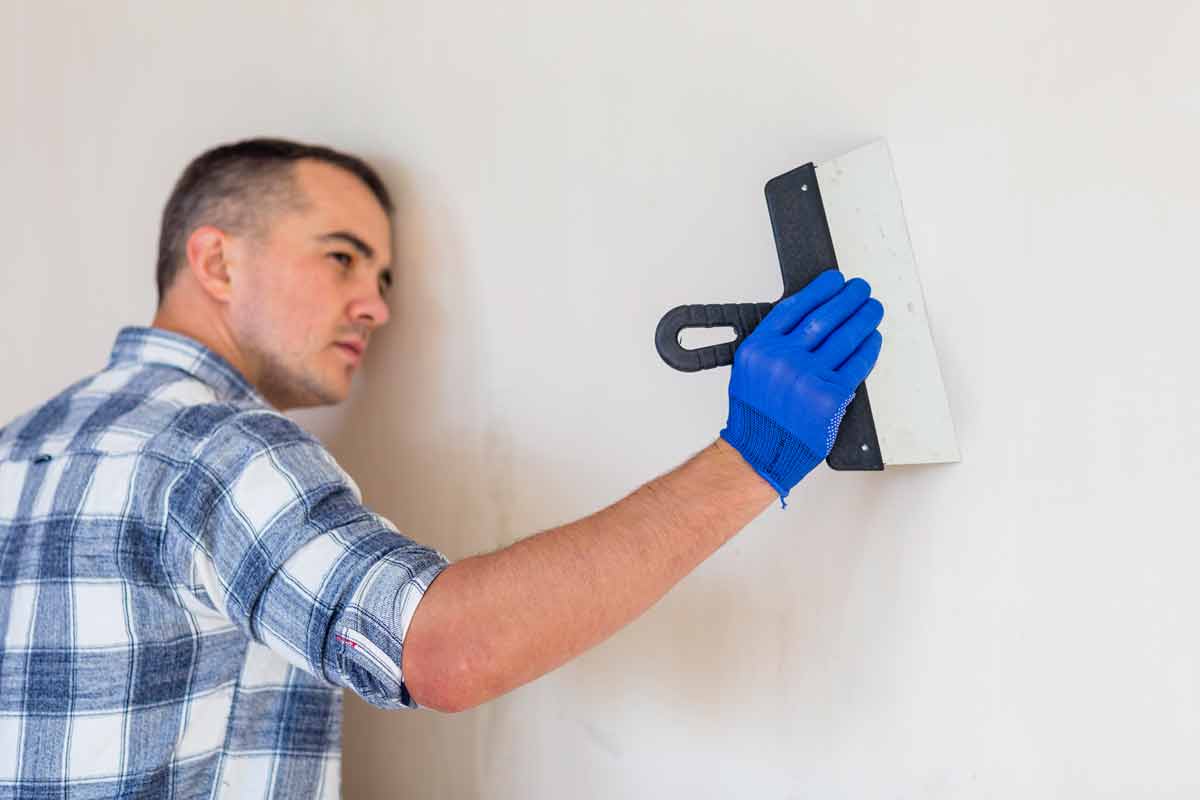
How Long Does It Take For Wall Paint To Dry
When fresh paint goes up on a wall, most expect it to dry quickly, but that’s not always the case. Drying times vary based on the type of paint, room conditions, and even the weather outside, especially in places like Avon, CT, where seasonal shifts can influence indoor temperature. Knowing paint drying times helps prevent smudges, peeling, and costly do-overs.
Here are five expert-backed insights to better understand paint dry time for walls.
Table of Contents
Key Takeaways
✔ Paint type—latex, oil-based, or specialty—directly affects how long it takes wall paint to dry.
✔ Room temperature and humidity levels significantly impact paint dry time for walls.
✔ Surface materials like drywall, plaster, or wood absorb paint at different rates.
✔ Proper prep and ventilation can reduce drying time for interior wall paint.
✔ Timing projects around weather and room use leads to better, faster results.
✔ Testing paint dryness goes beyond touch—it requires attention to color, texture, and curing.
✔ Working with professionals ensures ideal paint drying temperature and humidity for long-lasting finishes.

What Affects Paint Dry Time for Walls
1. Paint Type Sets the Pace
Not all wall paints dry the same way or at the same speed. The base formula—latex, oil, or specialty—plays a major role in how long drying takes. Understanding the type of paint used helps set realistic expectations for the paint dry time for walls.
How Different Paint Formulas Affect Drying
- Latex Paint: This water-based option is popular for interior walls because it dries quickly—often within one hour to the touch. However, it usually needs at least four hours before it’s ready for a second coat, and full curing can take up to two weeks.
- Oil-Based Paint: Known for its smooth finish and durability, oil-based paint takes longer to dry—typically six to eight hours before it can be recoated. Because of its slow dry time, it’s more sensitive to paint drying temperature and humidity, which can stretch the process even further.
- Low-VOC and Specialty Paints: These paints are designed for better air quality and may use unique binders or additives that affect drying time. Some dry faster than latex under ideal conditions, while others need a full day to set before recoating.
2. Room Conditions Play a Bigger Role Than Expected
Environmental conditions inside the room directly impact how quickly paint dries. Factors like airflow, humidity levels, and temperature either speed up or slow down the process. Avon, CT, painters know that controlling the paint drying temperature and humidity inside makes a huge difference in the final result.
How Interior Conditions Influence Drying Time
- Humidity Levels: High humidity slows the evaporation process, making the drying time for interior wall paint much longer than expected. If the room’s humidity sits above 60%, painted walls can stay tacky for hours—even if the paint is otherwise fast-drying.
- Room Temperature: Cooler temperatures below 50°F or spikes above 85°F both create problems for drying. The best drying conditions for wall paint usually fall between 65°F and 75°F for consistent results.
- Air Circulation: Proper ventilation helps moisture escape and speeds up the time for painted walls to dry. A steady, gentle airflow from a fan or open window (without direct drafts) promotes a more even finish.
3. Wall Material Affects Absorption
Paint doesn’t sit on every surface the same way. The type of material underneath the paint can change how long it takes to dry and cure. Surface texture, porosity, and whether the wall was primed matter when calculating how long does it take wall paint to dry.
How Surface Types Can Change Dry Time
- Drywall and Plaster: These common surfaces are somewhat porous and absorb paint at different rates. Drywall typically allows for faster drying, while plaster may hold moisture longer, stretching out the paint dry time for walls.
- Wood Paneling or Trim: Painted wood surfaces—especially raw or unsealed—often require more drying time. The paint can soak into the grain unevenly, which affects the overall time for painted walls to dry and increases the need for multiple coats.
- Previously Painted Walls: When painting over an old finish, drying time is usually shorter because the surface isn’t absorbing much. However, glossy or oil-based layers underneath may still affect adhesion and the final drying time for interior wall paint.
4. Paint Application Technique Makes a Difference
How the paint is applied affects more than just the finish—it impacts how long it takes to dry. Brushing, rolling, or spraying each create different layers and thicknesses. These small choices can noticeably alter the paint dry time for walls.
How Application Method Impacts Drying
- Brush vs. Roller: A brush usually lays down a thicker coat of paint, which takes longer to dry than a roller. Rollers distribute paint more evenly and thinly, often helping reduce drying time for interior wall paint.
- Spray Painting: Professional sprayers apply paint in fine layers, which can dry quickly under the right paint drying temperature and humidity conditions. However, overspray or too many coats too fast can cause drips or extended dry time.
- Paint Thickness: The thicker the application, the longer it takes for walls to fully dry. Heavily layered walls might feel dry to the touch but can trap moisture underneath, adding hours to the time for painted walls to dry.
5. Timing Matters More Than Most Think
When the painting happens—time of day, season, and how long between coats—all influence drying time. Even the best paint formula can fail if applied at the wrong moment. Avon’s seasonal shifts are a great reminder that timing impacts how long does it take wall paint to dry.
How Time Affects Drying Conditions
- Time of Day: Painting in the early morning or late evening during cooler hours can extend the time for painted walls to dry, especially if humidity rises. Midday offers steadier temperatures and better ventilation for drying.
- Seasonal Changes: Winter air tends to be drier but colder, while summer adds heat and moisture—both extremes complicate paint drying temperature and humidity balance. Spring and fall offer the most stable best drying conditions for wall paint.
- Time Between Coats: Rushing into the second coat before the first has fully dried can cause bubbling, peeling, or uneven texture. Professionals recommend checking the label but also testing dryness by gently touching a hidden spot before reapplying.
Prepping a Room to Help Paint Dry Faster
Getting a room ready before painting sets the stage for faster, cleaner drying. The right prep can improve airflow, reduce moisture, and create the best drying conditions for wall paint, especially when sanding and patching are needed. Wall prep typically costs between $0.50 and $0.75 per square foot, making it a worthwhile investment for a smoother finish and reduced drying time.
1. Clear the Space Completely
Removing furniture, rugs, curtains, and wall hangings opens up the room and improves ventilation. A clutter-free space helps air circulate around all surfaces, reducing the time for painted walls to dry. Professionals often clear the area entirely before painting to avoid dust and damp materials that can interfere with proper drying.
2. Clean the Walls Thoroughly
Dust, grease, and residue prevent paint from adhering properly and can extend drying times. Using a damp sponge with mild soap clears buildup and ensures the surface dries evenly after each coat. Experienced painters stress that a clean surface reduces the risk of touch-ups and helps answer how long it takes wall paint to dry with more certainty.
3. Repair and Prime the Surface
Patching holes and sanding rough spots creates an even surface that absorbs paint consistently. Applying a quality primer helps seal porous materials like drywall and speeds up the paint dry time for walls. A professional painter knows which primer works best with each paint type to support faster drying and better durability.
4. Ventilate Without Overdoing It
Opening a few windows or placing a fan nearby helps paint dry more evenly, but strong gusts can introduce dust or cause uneven patches. A slow, steady flow of air is ideal for balancing paint drying temperature and humidity. Professionals often use box fans or ventilation systems to control airflow in a targeted, dust-free way.
5. Control Temperature and Humidity
Keeping the room between 65°F and 75°F with humidity under 50% creates ideal drying conditions. Portable heaters or dehumidifiers may help regulate the space, especially in humid climates or rainy seasons. Maintaining the right paint drying temperature and humidity supports a smoother finish and reduces delays between coats.
6. Choose the Right Time of Day
Painting mid-morning or early afternoon takes advantage of stable indoor temperatures and natural light. Avoiding painting at night or during damp early mornings can reduce the drying time for interior wall paint. A professional team will often plan projects around the time of day to align with the best drying conditions for wall paint.
Planning a Painting Schedule Based on Weather and Room Use
Scheduling the job with weather patterns and room activity in mind helps speed up the paint dry time for walls and ensures a smoother, longer-lasting finish. As demand grows, this precision becomes even more critical, with the painting and wall covering contractors market projected to increase from $227.47 billion in 2024 to $237.29 billion in 2025.
This attention to detail is one reason local painters strategically plan their calendars—to reduce disruptions and maintain optimal temperature and humidity for drying.
1. Check the Weather Forecast First
Even for indoor painting, outdoor weather affects temperature and humidity levels inside. Rainy days or extreme heat can throw off the best drying conditions for wall paint, even in a climate-controlled space. Professionals look ahead to choose stable, dry weather for faster, more predictable drying time for interior wall paint.
2. Prioritize Low-Traffic Rooms First
Starting in guest rooms, spare bedrooms, or basements helps avoid constant interruptions. These areas can remain undisturbed for longer periods, reducing the risk of smudges and giving more time for painted walls to dry. A professional painter will often block out less-used rooms early in the schedule to set a smooth pace for the rest of the project.
3. Avoid Painting Right Before Holidays or Events
Trying to rush painting before a party or family gathering often leads to problems. Tight timelines can tempt people to skip drying windows, causing paint to peel or bubble later. Knowing how long does it take wall paint to dry helps contractors recommend safer gaps between painting and big events.
4. Paint Kitchens and Bathrooms Last
These rooms experience higher humidity and more daily use, which slows down drying time for interior wall paint. Painting them last gives time for earlier coats in other areas to cure, and avoids interrupting routines like cooking or bathing. Pros often bring dehumidifiers when working in these rooms to control paint drying temperature and humidity more closely.
5. Schedule Around Natural Light Hours
Mid-morning to mid-afternoon usually offers the most stable indoor conditions. Natural light helps spot missed patches or uneven coverage while allowing paint dry time for walls to stay on track with steady warmth and airflow. Professionals prefer these hours because artificial lighting can cast shadows and distort paint colors during application.
6. Build in Time for Curing Between Coats
Even if paint feels dry to the touch, it may not be ready for another layer. Rushing this step can affect the final finish and extend the time for painted walls to dry properly. Working with experts ensures each layer has the time it needs to set, especially when using specialty paints or textured surfaces.

How to Test If Wall Paint Is Fully Dry
A wall that feels dry may still be curing underneath, which can affect adhesion and durability if disturbed too soon. The following methods help confirm if the paint dry time for walls is complete and whether it’s safe to move forward with decorating or applying another coat:
1. Perform the Fingertip Test
Lightly press a clean, dry fingertip against an out-of-sight section of the painted wall. If no paint transfers and the surface feels firm, it’s likely past the initial drying time for interior wall paint. However, professionals note this test only checks the surface—not whether deeper layers have fully cured.
2. Use the Thumb Twist Method
Gently press a thumb into the wall and twist without too much pressure. If the paint wrinkles or lifts, it hasn’t cured, even if it feels dry to the touch. This is a reliable way to gauge whether the full time for painted walls to dry has passed, especially before applying a second coat.
3. Watch for Sheen or Color Shifts
Paint often changes in gloss or tone as it dries and cures. A fresh coat may appear shinier or darker than expected, then settle into its true finish once completely dry. Professionals look for uniform sheen and color to confirm how long does it take wall paint to dry under the given paint drying temperature and humidity conditions.
4. Read the Paint Manufacturer’s Label
Each brand offers drying and curing guidelines based on lab-tested environments. These estimates usually assume ideal paint drying temperature and humidity, so real-world settings may require more time. Contractors rely on these benchmarks but adjust them based on the room’s actual conditions to ensure proper paint dry time for walls.
5. Let a Professional Evaluate It
Trained painters use experience, tools, and environmental monitoring to determine when paint is truly dry. They factor in variables like surface type, number of coats, airflow, and finish expectations. For homeowners unsure about whether the drying time for interior wall paint is complete, a pro’s opinion can prevent costly do-overs and damage.
Can wall paint dry faster with a hair dryer or heat gun?
Using a hair dryer or heat gun to speed up drying is risky and not recommended for walls. Concentrated heat can cause the paint to bubble or dry unevenly, especially if the paint drying temperature and humidity aren’t well controlled. For safe and consistent results, it’s better to stick with proper ventilation and the best drying conditions for wall paint.
Does the color of wall paint affect how long it takes to dry?
Darker colors with higher pigment content can take slightly longer to dry, especially if applied in thick coats. This doesn’t drastically change the paint dry time for walls, but it may delay recoating or curing by a few hours. Lighter shades tend to reflect more light and heat, which can help shorten the time for painted walls to dry in well-lit spaces.
Is there a difference in drying time between matte and glossy wall paint?
Yes, finish types like matte, eggshell, satin, or gloss can affect drying time for interior wall paint. Glossy paints often take longer to dry and cure fully because of their resin content. Professionals factor finish into the plan when estimating how long does it take wall paint to dry before a room is ready for use.
Can ceiling fans help wall paint dry faster?
Ceiling fans can improve airflow, which may speed up paint dry time for walls, but they must be used carefully. If the fan stirs up dust or is too strong, it can damage the fresh paint. To help reduce time for painted walls to dry, painters often use fans on a low setting to support even drying without creating debris.
Does the number of paint coats change how long it takes for walls to dry?
Absolutely—more coats mean longer drying and curing times overall. Each additional layer extends the total drying time for interior wall paint, especially if previous coats weren’t fully dry. Understanding how long does it take wall paint to dry between layers is essential to avoid problems like bubbling or uneven texture.
Get It Done Right the First Time with Avon Professionals House Painter
When it comes to clean lines, flawless finishes, and paint that dries as it should, Avon Professionals House Painter brings experience that shows in every room. Our team in Avon, CT, knows exactly how to work with Avon’s seasonal humidity and indoor climate to get the paint dry time for walls just right. Whether it’s a full home refresh or a single-room upgrade, we handle every detail—from prep to cleanup—with precision and care.
Schedule your next project in Avon, CT, with expert painters today!
